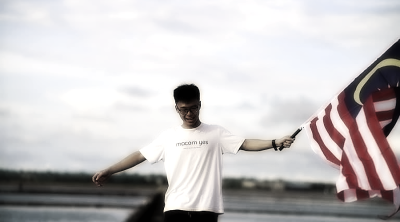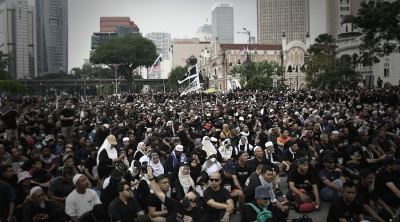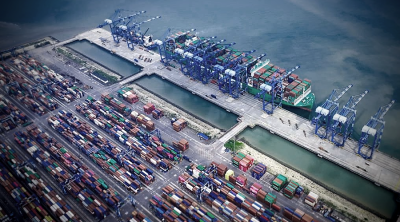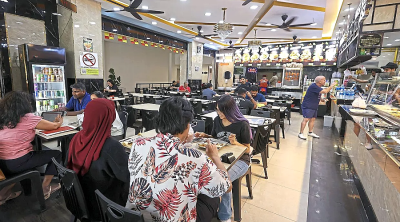
As we watch the news daily, we are bombarded with the daunting increase of new cases of COVID-19, with daily infections exceed 10,000 in a day.
It is a rather scary phenomenon for us as we witness the worst hits of COVID-19 in the country.
According to the projection by the National COVID-19 Immunization Program (PICK) coordinating minister Khairy Jamaluddin, the government was targeting to administer about 52 million vaccine doses to around 26 million people, accounting for some 80% of Malaysia’s total population by the end of this year.
At the time of writing, the enhanced movement control order (EMCO) in most of Selangor has just been lifted despite the high number of cases.
The entire country is expected to move into Phase Two of the National Recovery Plan (PPN) in early August, as announced by Deputy Prime Minister Datuk Seri Ismail Sabri Yaakob.
The four phases in the PPN was formulated based on data that hinges on three leading threshold indicators: the COVID-19 transmission within the community based on the number of daily cases, the capability of the nation’s public health system based on the occupancy of intensive care unit (ICU) wards at health facilities across the country, and the rate of the population fully vaccinated against the virus.
What is the alternative if we could not achieve the three indicators to move to the next phase?
So now, as we await the next step and anticipate the possibility of Phase Two, one must beg the question: can we afford another lockdown?
Realistically, the answer to this is relatively straightforward. No, we cannot.
As we continue to see the rise of cases, it is becoming more apparent that a lockdown or any similar form of such approach may be prolonged. However, the truth of the matter is, can we afford another lockdown for any good reason?
Malaysia has experienced several rounds of lockdown at different levels.
Though doubts on the movement control order (MCO) effectiveness were raised at the early stage of its implementation, it worked somehow. It helped contain the virus, control its spread and mitigate the number of cases it could have produced.
Unfortunately, the success did not last long, and now here we are, witnessing the rise of COVID-19 in the community with a gloomy mood.
Everyone is exhausted. Businesses continue to suffer, and it is critically important that a solution be reached.
Next, the cost of closing schools has been devastating. Although it is announced that the schools could probably reopen in September, the impact on children’s physical and mental growth is a real headache.
Various reporting has shown us that while e-learning is an alternative, it is not a feasible solution to achieve optimum learning results.
We cannot afford lockdowns because our poor and marginalized groups cannot live without their daily wages.
It has rendered many persons and households unable to even provide food on the table, which triggers the food bank initiatives.
It has also angered people with the rise of the white and black flag movements in response to our COVID-19 reactions, and it is heart-wrenching.
It is understood that important decisions will be made and drastic measures will have to be taken. However, we must consider the cost and weigh the options.
A decision has to be made and is imminent, but we need to keep balance on reality coupled with the needs of our people.
Do we adhere to safety measures, healthy best practices and advice from the professionals and combat this virus and keep it at bay? This further raises the question of governance and competency.
While all of us understood, it is a global pandemic that even the countries that have achieved success could fall back to the waves. But have we done enough? Did we do it right? Did we listen enough to public opinion? Did we send the right message to the people?
We have heard our ministers so many times that Malaysia cannot afford another total lockdown as it will be very detrimental to the country’s economy.
This has reignited the debate about how best to continue the fight against COVID-19. What are the trade-offs of different strategies? Is our PPN going to be effective?
No one denies that nothing is guaranteed at the times of the pandemic, more so with the different variants such as Delta that has reached our country.
The topic of lockdowns has been ripe with debate since the COVID-19 pandemic began earlier last year.
The discussion has multiple facets, and ultimately the challenge most have seen is that if you are going to do it, people need to support it, and it needs to be well-planned.
The first COVID-19 cases were reported in Malaysia on 25 January 2020, followed by an upward swing of the cases by the end of February 2020.
On 18 March 2020, we began the implementation of the MCO. As of now, we have implemented multiple measures to contain the COVID-19 pandemic.
The Malaysian experience points to compliance and cooperation of the public as essential elements for the success of interventions by the government to contain COVID-19.
Nonetheless, the socioeconomic implications require attention and proper handling, despite relief and stimulus measures.
Governments around the world have faced the challenge of how to respond to the COVID-19. Some have reacted by greatly restricting citizens’ freedom, while others have opted for less drastic policies.
However, as the number of new daily confirmed cases decreases, we must decide how to release the populations from quarantine or self lockdown as efficiently as possible while ensuring the people are protected.
Containment of the virus has proven challenging, and it is the same for Malaysia. The question is, how do we achieve the optimal pathway by which to release people as safely as possible back into the new normal?
It has been a journey with a blurred direction, as it feels like the government is messing up their chances to contain the pandemic and getting away with it.
The sheer uncertainty felt across our socio-political spectrum can be overwhelming.
We no longer talk of flattening the curve because it seems to be a distant goal for us. Nevertheless, even if the end of the pandemic is not in sight, it is possible to mitigate the impacts with a better approach.
None of us expects to live with the pandemic for so long and much less prepare for it. Confining people in their homes may have reduced their chances of spreading the virus, but it has raised other risks such as domestic abuse and mental health problems that are highly concerning.
Hence, I would like to emphasize that the disjointed lockdowns are limited in their efficacy, and efforts should be focused on reducing the impacts of the COVID-19 pandemic.
Its public health measures go beyond physical and mental health and incorporate broader well-being impacts on the people.
To do so, our government must admit to their flip-flop measurements that continue to be confusing for the public, be it in the recovery plan or our vaccination program.
Mixed messages continue to be sent to the public, impacting the trust and confidence of the people in the government on their measures to contain the virus.
To determine an optimal solution requires clear communication and transparency, but we also need to implement the whole-of-society approach that has been continually mentioned, including by the government.
Nevertheless, in reality, it is not as holistic as it is supposed to be.
To lockdown or not to lockdown is no longer the main topic. Rather, the concern is how can we better support the people’s livelihoods during this crisis.
(Khoo Ying Hooi is Universiti Malaya Senior Lecturer.)
ADVERTISEMENT
ADVERTISEMENT








































